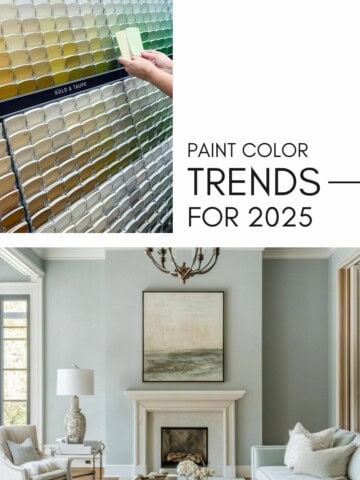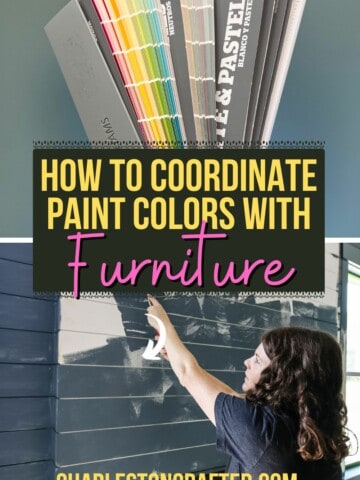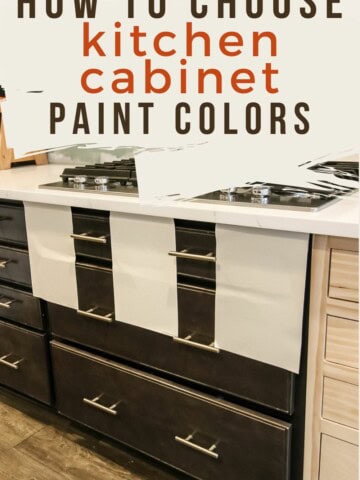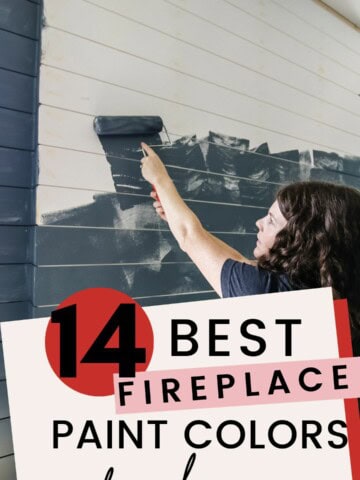Learn how to create a whole house color scheme that flows room to room without hiring a designer! This easy guide walks you through picking a cohesive palette that fits your home’s style, lighting, and layout—perfect for real-life DIYers.
One of the most fun – but most overwhelming - parts of decorating your home is choosing paint colors.
To make it even more complicated, once you narrow down to a paint color, you want to make sure that the colors flow between your rooms. This flow is generally called a color scheme.
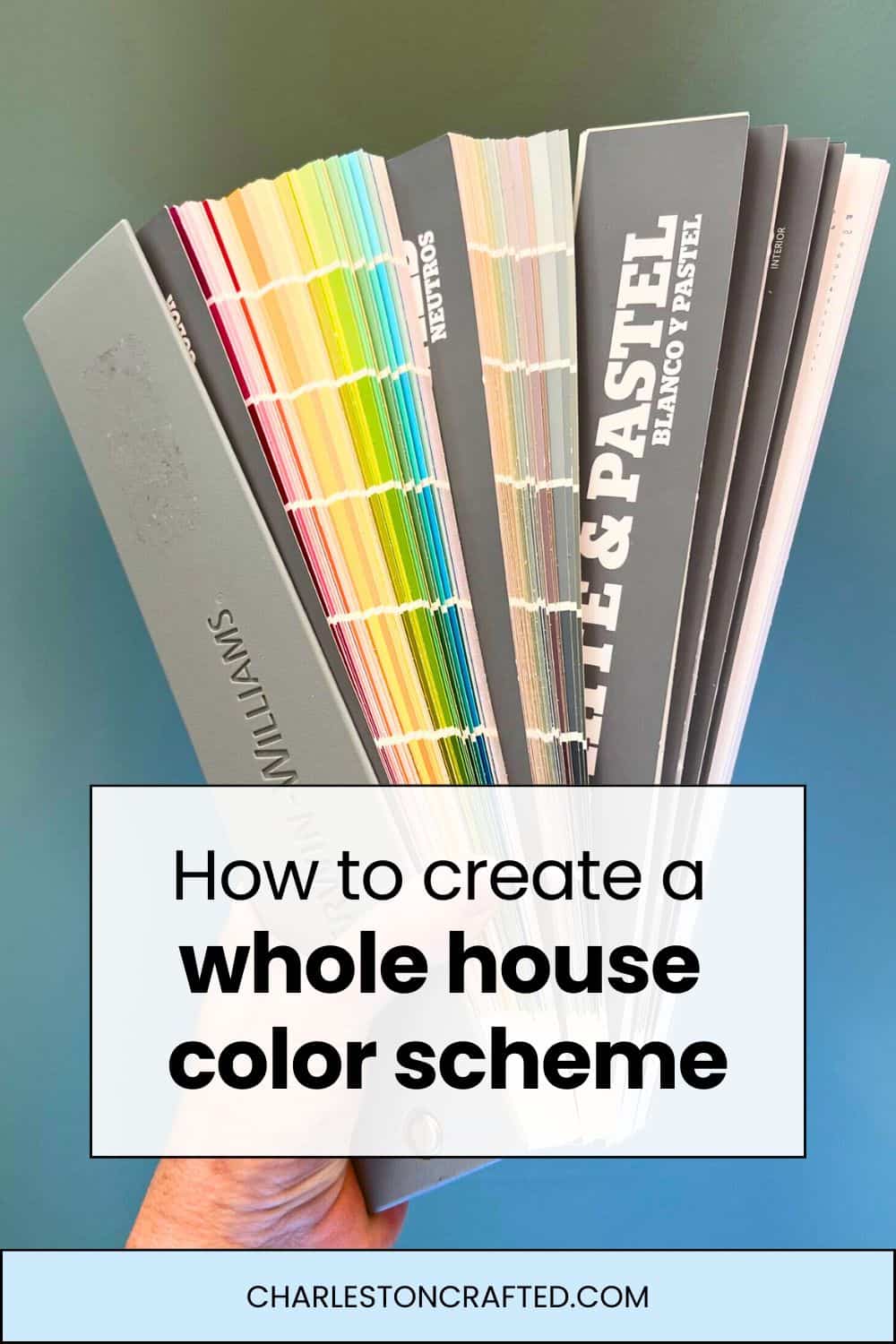
And while you are absolutely free to have every color in your home a different shade of the rainbow, for a cohesive, high-end luck you typically want to have a flowing color scheme between the spaces.
This definitely does not mean that every room has to be the same. But the wall and accent colors that you choose should complement each other even in different spaces.
Today I want to talk about everything you need to consider when creating a color scheme for your home.
Click here to learn my simple step by step process to pick the perfect paint color every time!
How to create a whole house color scheme
Here are the steps that I generally follow to lay out a color scheme for a home!
Step 1: Start with What You Already Have
Whenever you are picking a paint color for any space, you want to start with the fixtures that will not be changing in the space.
This could be flooring, cabinets, or furniture you will not be replacing or changing.
You are going to want to be sure that the paint and accent colors that you choose work with these colors.
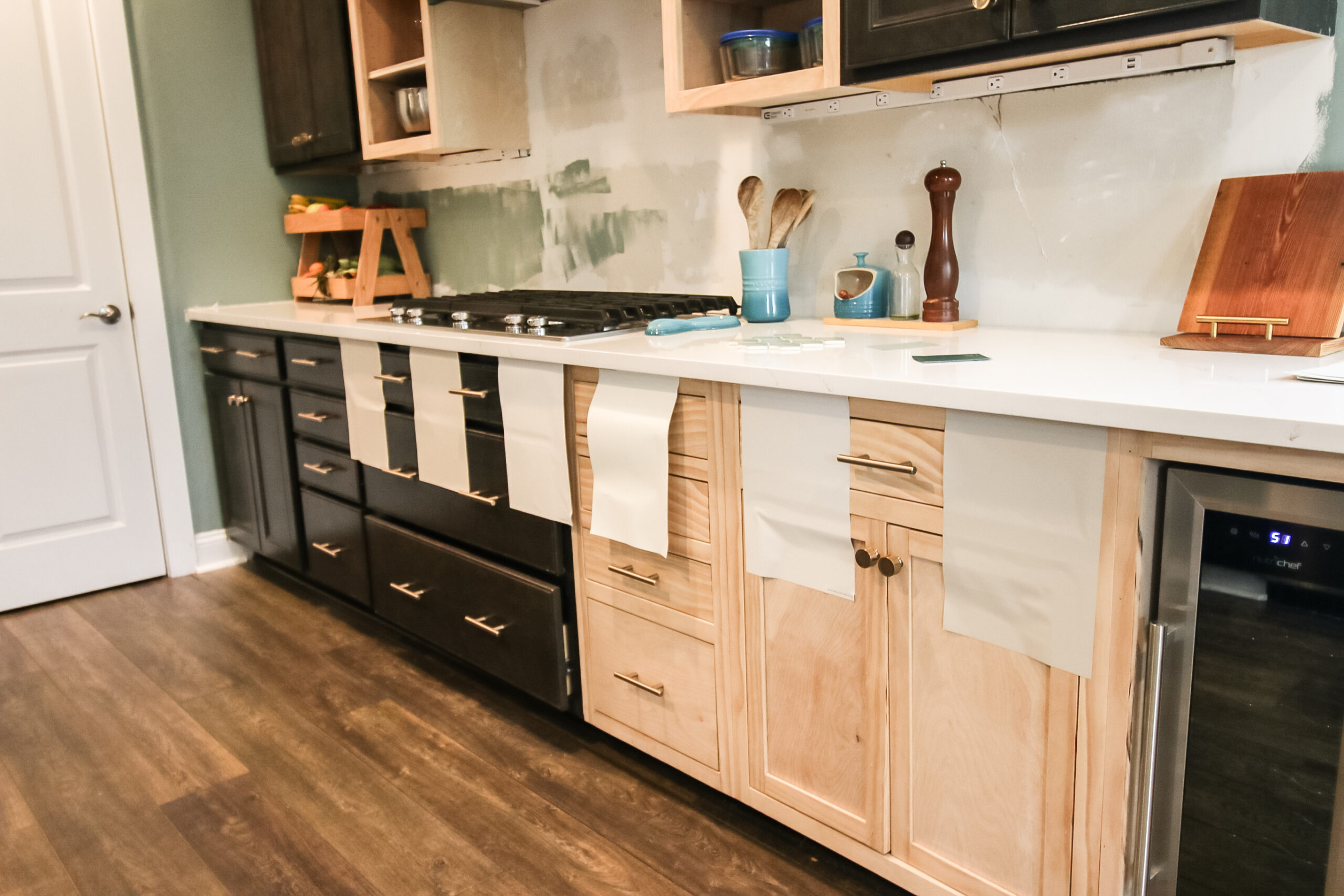
Look at the tone - are they warm toned or cool toned? Generally, it is easiest if you match the tone, so the wall color would also be warm or cool toned to match the fixture.
Look at the depth - do you have a lot of dark fixtures? You might want to lighten the space with brighter, lighter paint colors.
Look at the colors - do you already have a color scheme going on with your fixtures? Do you want to maintain that or provide contrast?
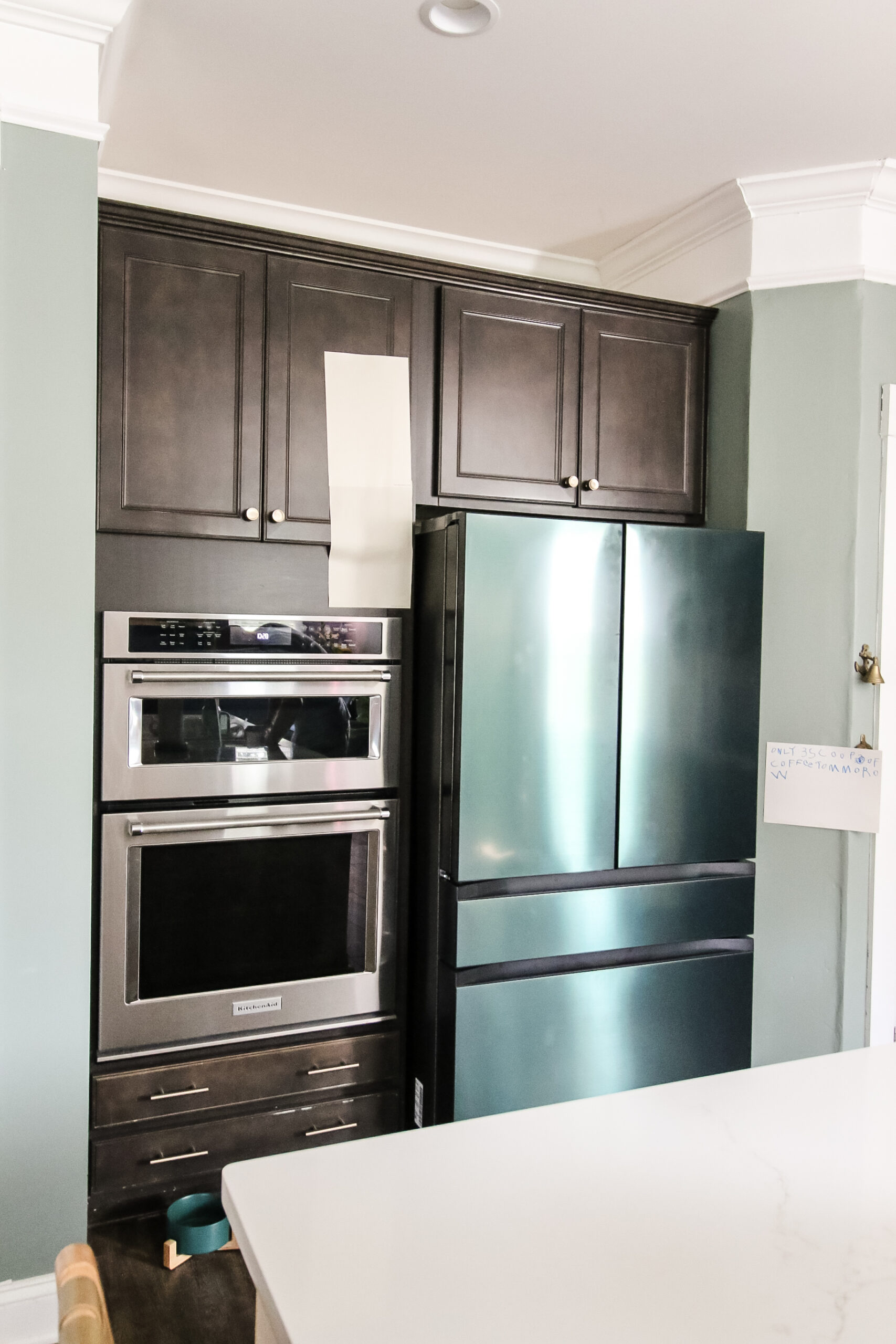
What room do you start in when picking paint colors for multiple rooms?
One of the top paint color questions that I get is where to start when choosing paint colors. I always recommend starting with a room that has the most fixtures or the most complicated fixtures color-wise.
Almost always in living areas this is the kitchen. Kitchens have flooring, tile, countertops, cabinets, and lots of other things you were probably not changing that you want to be sure to coordinate with.
If you are working in a bedroom space, the same applies often to bathrooms. Start with the tile and countertops and cabinets there and pick a color that flows with that before choosing the colors for the adjacent rooms.
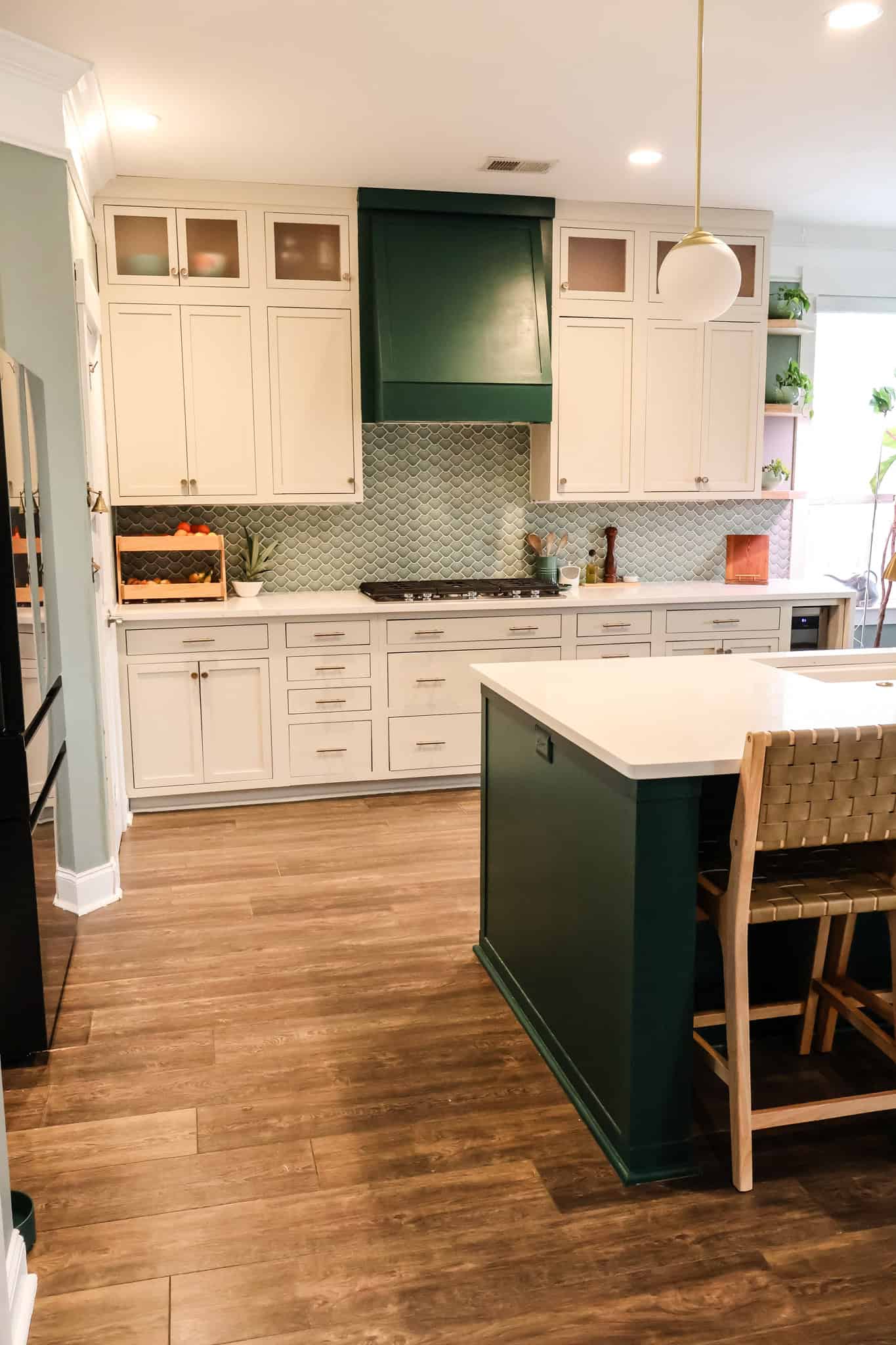
Step 2: Pick a Base Neutral Color (or Two)
Generally the easiest way to create a multiple room color scheme is to start with a base neutral color. This could be white, beige, tan, gray - any shade of neutral that you prefer to be sort of the go to wall color in all of your spaces.
This does not mean it is the only wall color, but it is the primary one in most of the spaces.
Be sure to check out my round up of the best whole house paint colors for some inspiration.
To pick this neutral, pick a shade that you like with undertones that match your fixtures.
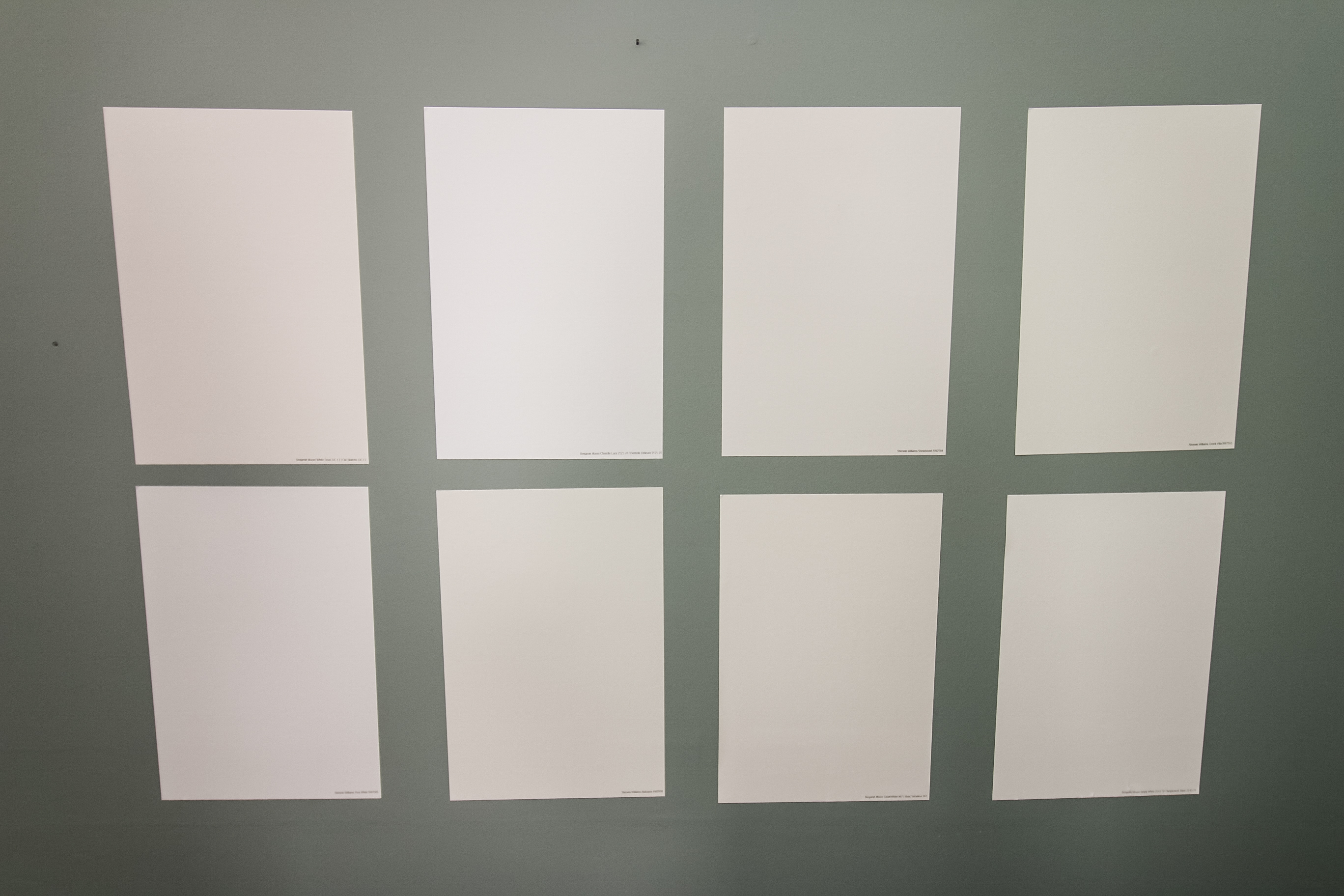
Step 3: Add Accent Colors
Once you choose your neutral color, you can start adding accent colors. This is where things can get fun.
If you go with a neutral color on all your walls, you can have different accent colors in the different spaces and they will still feel like they flow because they have the same wall color.
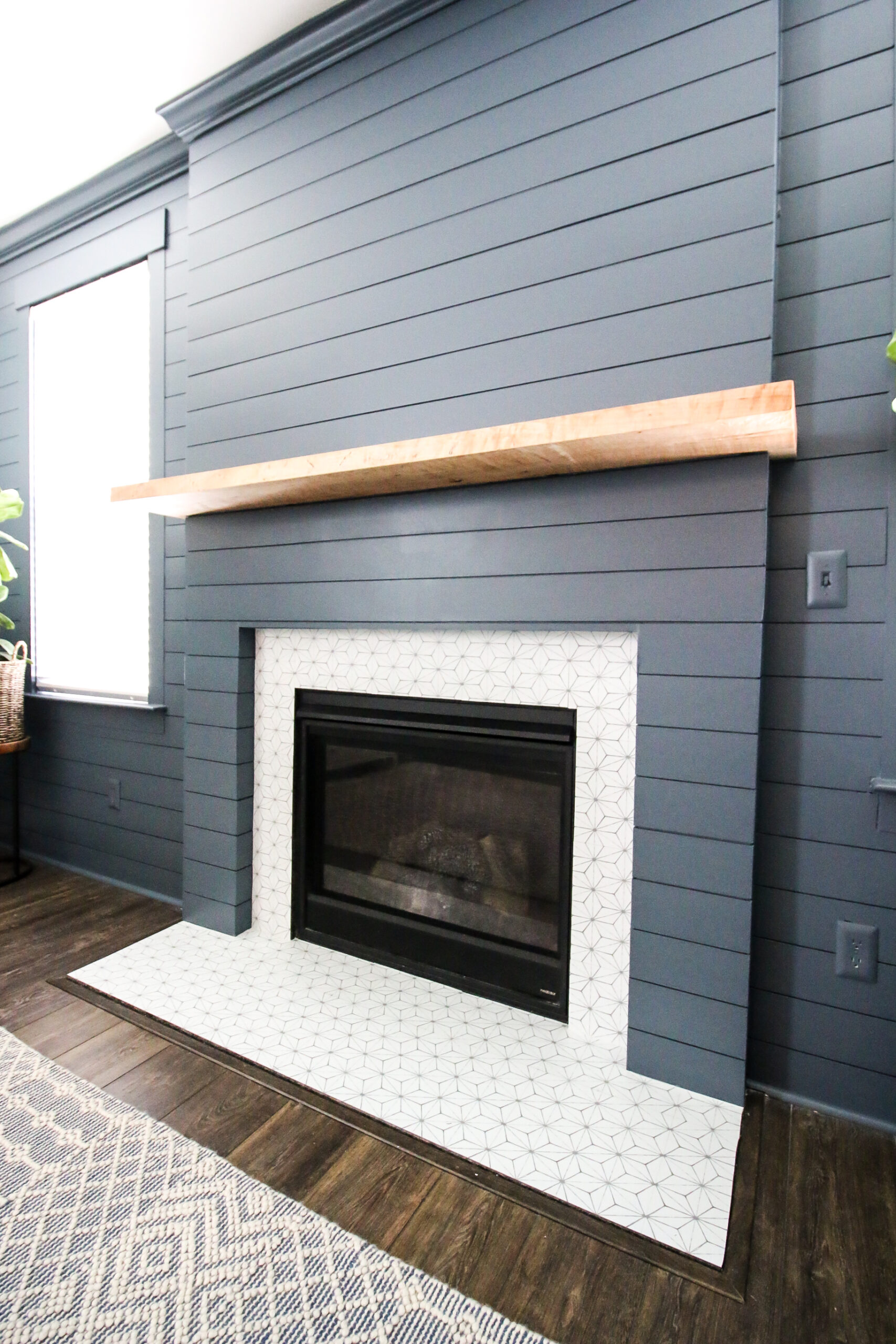
Using Accent Colors as Wall Colors
Alternatively, you could use an accent color in one room and then have a accent color is the wall color in the next room.
This is what we love to do. Our walls in most of our home are light green color and then we used a blue gray for an accent color. So, it makes sense to have some rooms where the blue gray color is the wall color.
It's different, but it's still flows really nicely because it is tied to the other spaces.
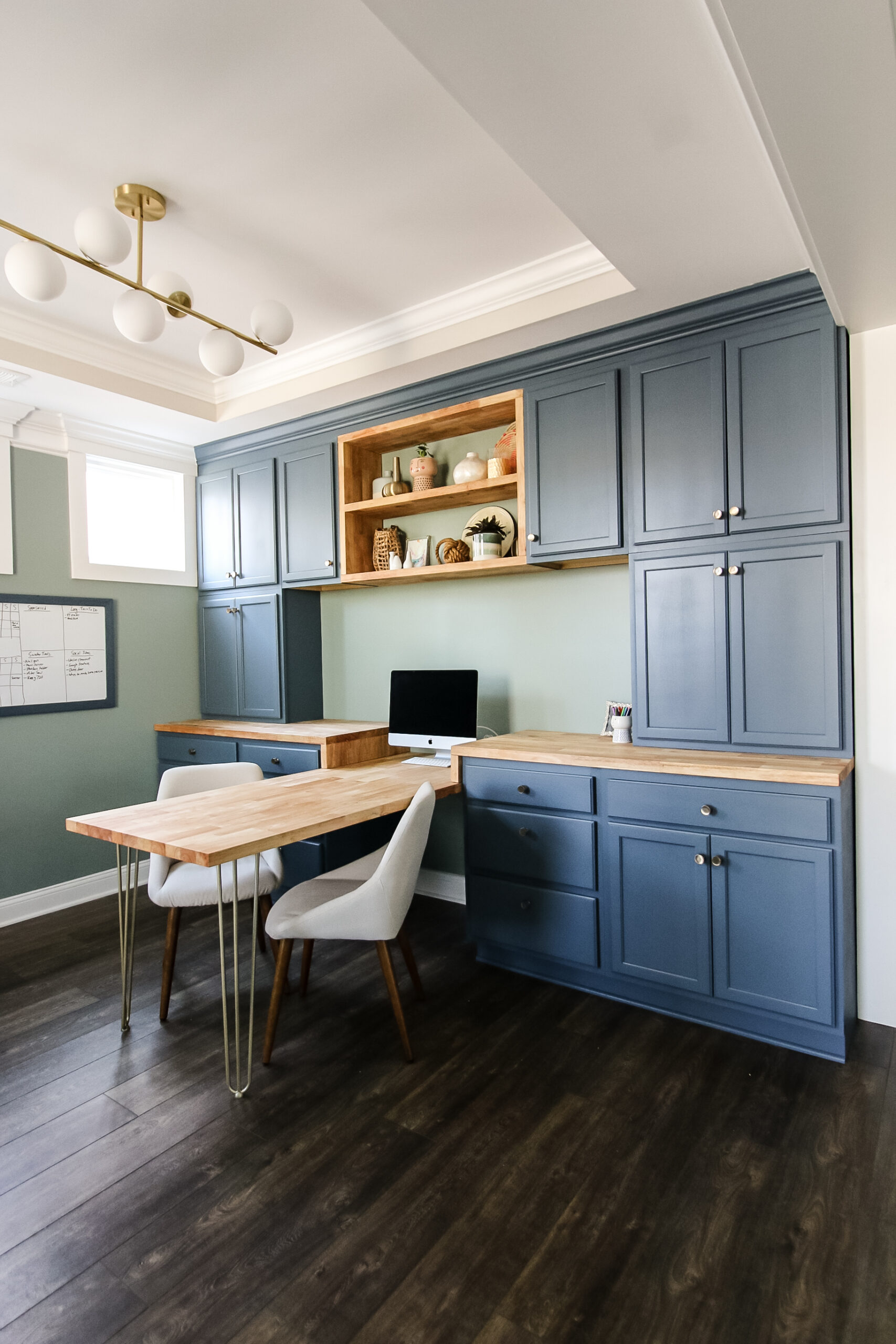
Using Different Shades of the Same Color
Another fun tip for picking accent colors is to look at different shades on the same paint strip.
You might want to use a lighter shade for the walls in your living space, but can go two or three shades down the same color strip for a deeper and more visually interesting paint color for an adjacent dining room.
These colors will naturally flow very well together – the paint company literally designed them as shades of each other – but provide a little bit of visual interest and depth difference.
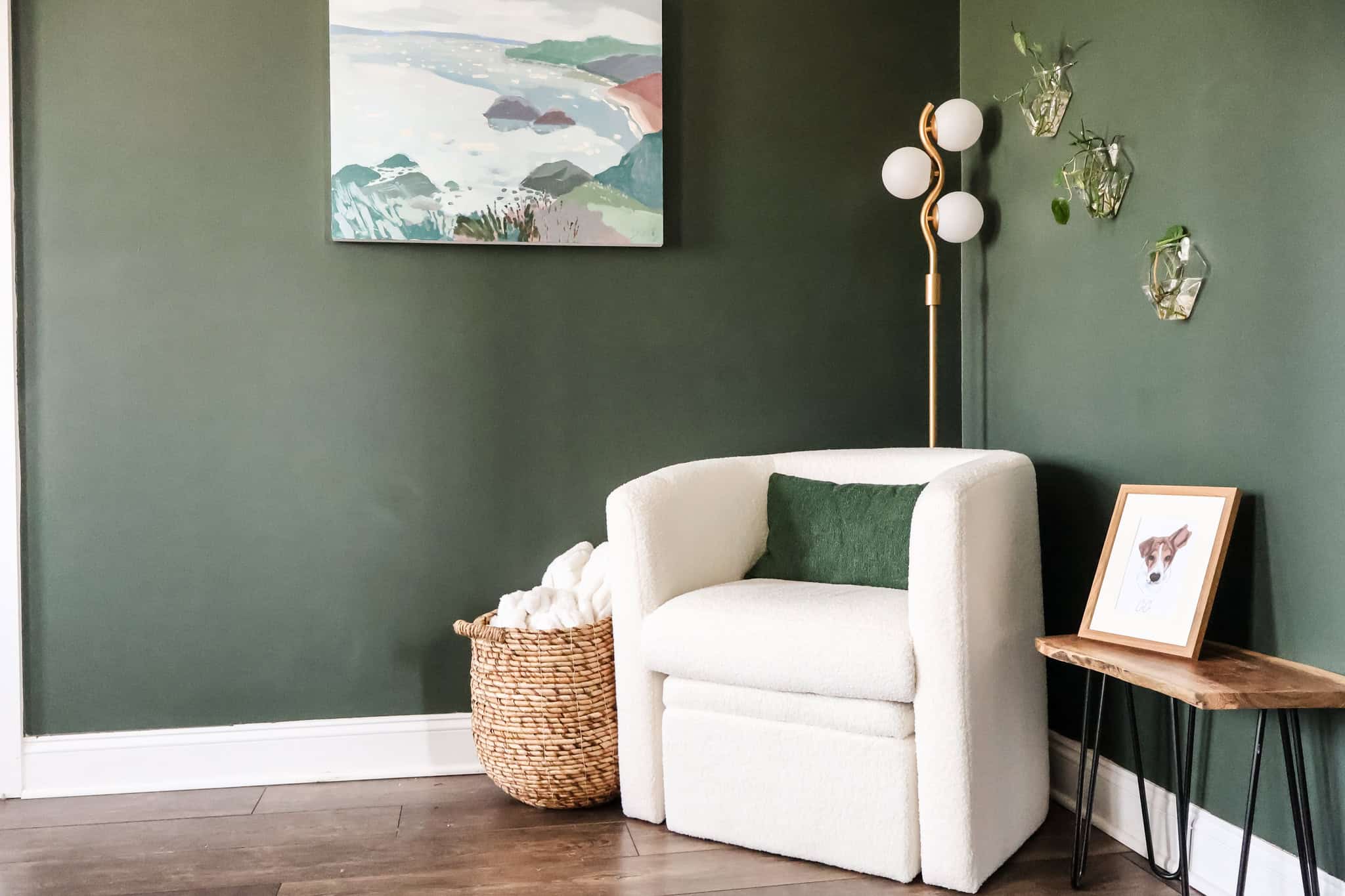
Step 4: Consider the Flow of Your Home
It is super important when you're picking paint colors to consider the flow in your home.
If you have an open concept space, you generally want to be a little bit more conservative with the number of colors that you use.
The walls should all pretty much be the same color unless you were doing an accent wall such as on or around a fireplace.
Another great place to bring in an accent color and an open concept space is the cabinets or furniture.
However, if your space is more divided into rooms with doors, or you have rooms like a bathroom, bedroom, or laundry space, it can be less startling to have different wall colors.
Step 5: Test in your Lighting
Lighting is the #1 thing that can affect how different paint colors look in real life.
But, what is wild is that even in an open concept space, a single paint color can look totally different on different walls, depending on where and how the light hits.
Because of this, it is SO important that you swatch potential colors - especially your base neutral shade - with large swatches on every wall in the space!
Look at the color day and night, lights on and lights off, to be sure you like how the color reads in every light.
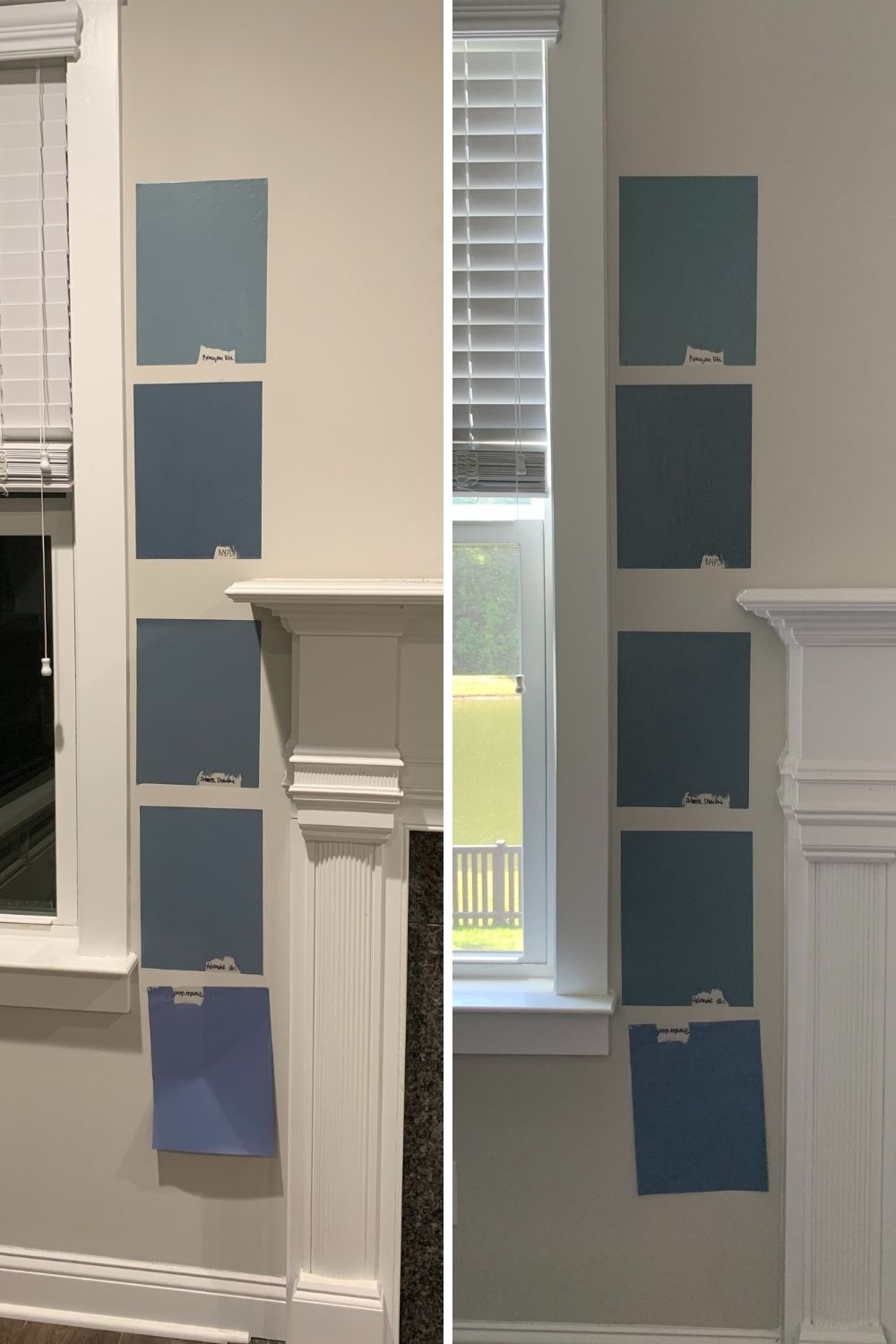
Step 6: Mix it up Before you Commit!
Before you commit to a color, be sure to try a few different options. It's easy to get your mind set on one thing, so just let a few different options play out.
You never know what you might actually prefer when you see it in the space!
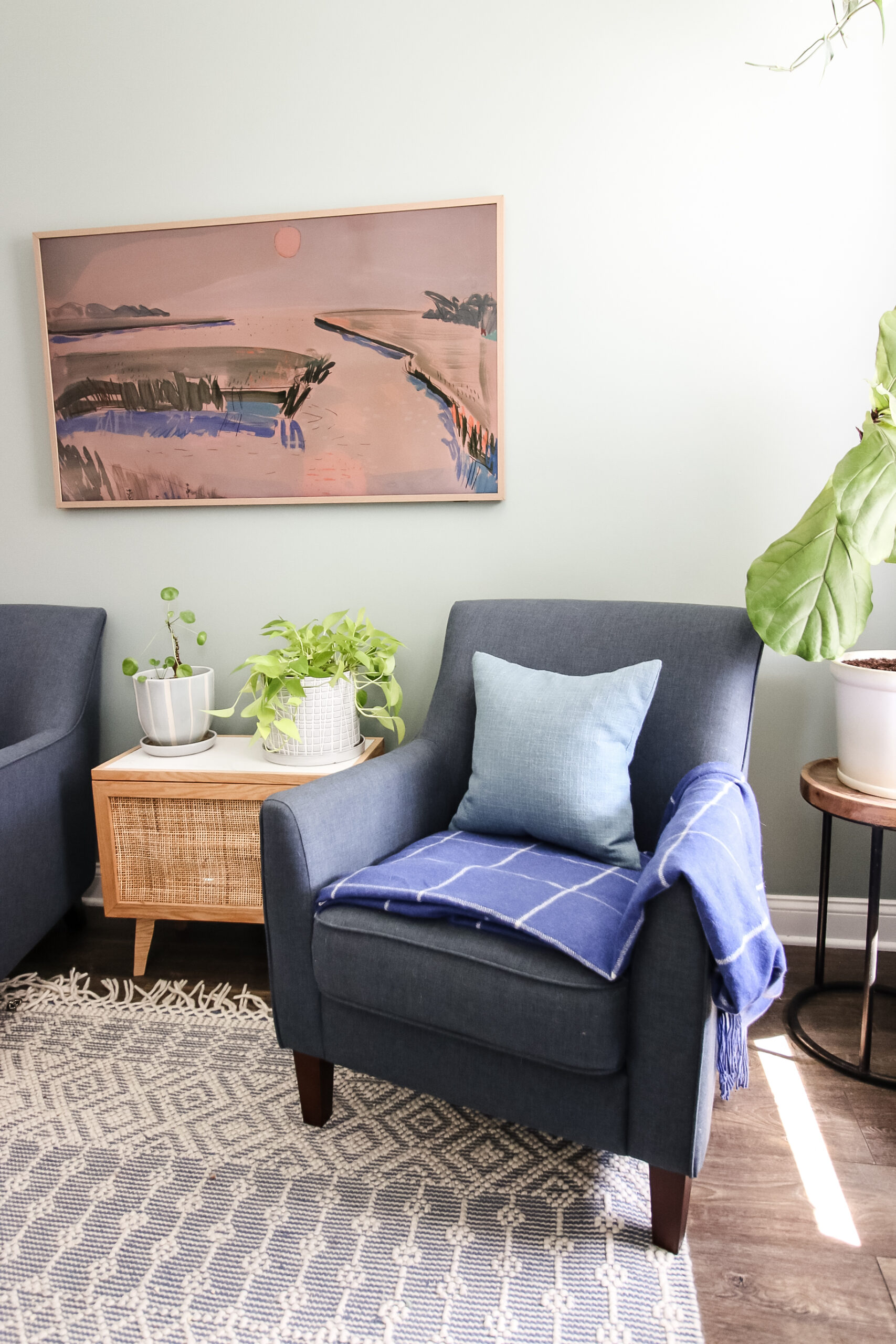
Step 7: Commit and Enjoy!
Once you pick a base color, commit to it and enjoy it!
Having that base neutral makes it easy to mix up the accents seasonally or as trends change.
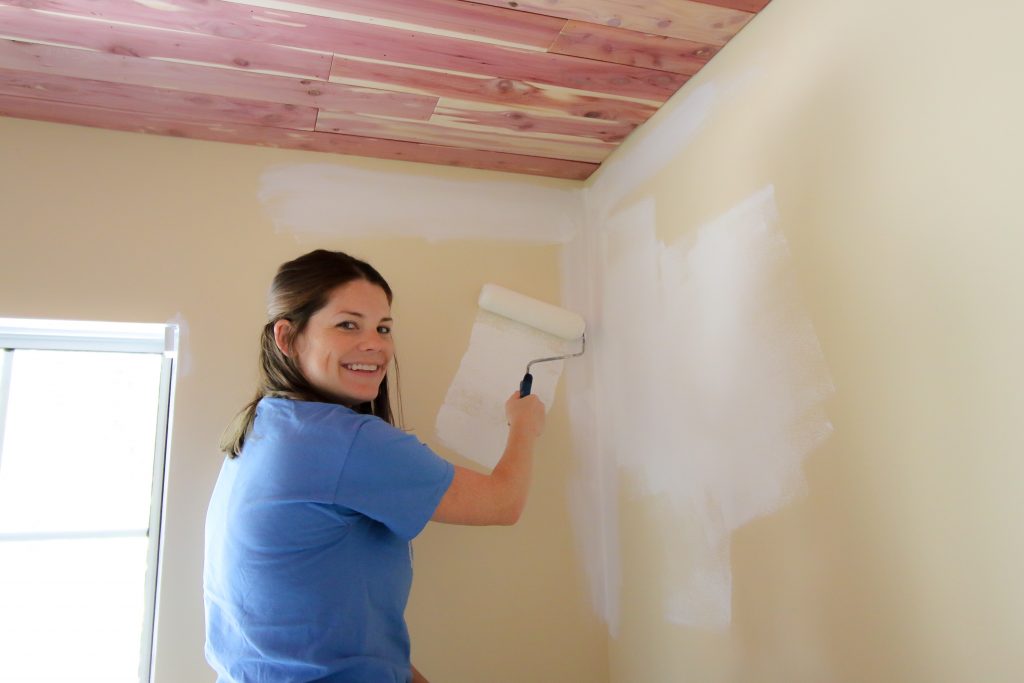
Enjoy your cohesive space!
Looking for something?
We've been doing this since 2012 so we have a LOT of blog posts!
Search stuff like: Ceiling Projects | DIY Plant Stands | Thrift Flips


Hello, I'm Morgan, half of the creative force behind CharlestonCrafted.com! With a passion for DIY that dates back to 2012, I've transformed three homes and now I'm dedicated to helping others craft their dream spaces. Let's turn your house into a home together!



